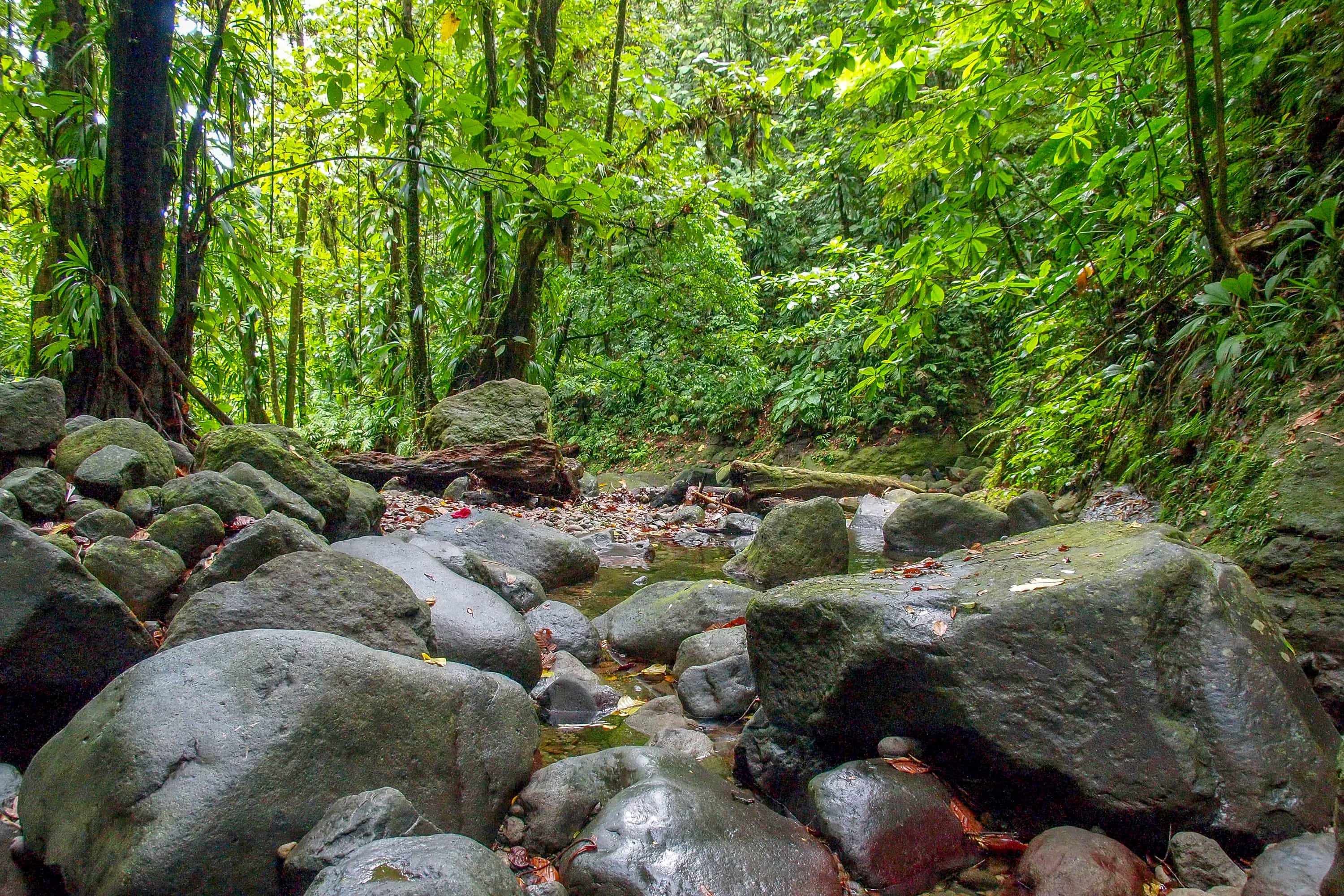The Maroons of Dominica and the Caribbean’s Forgotten War
They lived in this. The more dense the rainforest, the more treacherous and inaccessible the terrain, the better. Their home in the wildest wilds of central Dominica was their shield; a natural bulwark against a life of bondage. The names of their leaders are legend. Women like Calypso, Rosay, Victorie, and Tranquille. Men like Jacko, Balla, Juba, Zombie, and Jupiter. They led a 75-year fight for freedom, their exploits surpassed solely by their brethren in Haiti. They are the Negre Mawon, the Maroons of Dominica, and I’m ashamed to say that I don’t know very much about them.
My love of history is well chronicled here. So too is my love for Dominica. I’ve visited the Nature Island on three occasions over the past seven years. Each time I fell more deeply in love with her charms. It took my brother, Patrick’s, first visit to Dominica this past December, though, to turn me onto Dominica’s Negre Mawon.
History Lost, Now Found
A small, somewhat innocuous mention of their history found on an info sign at Emerald Pool piqued an interest in him that he shared with me. This led me to In The Forests of Freedom – The Fighting Maroons of Dominica. The book, which I’m presently in the midst of reading, was written by Dominica’s preeminent historian, Dr. Lennox Honychurch. I’m only about halfway through, though it’s already given me the best, most meaningful reason I’ve ever had for wanting to return to Dominica.

In the Forests of Freedom details a fascinating chapter of largely forgotten Caribbean history that truly everyone should know. This goes double if you appreciate such weighty attractions as the Citadelle and Sans Souci Palace in Haiti, or Goreé Island in Senegal. It is the story of escaped slaves who would not be conquered. Free Africans waging all-out war against successive and equally tyrannical European powers from 1763 to 1838.
Maroons of Dominica War for Freedom
There’s was not a series of isolated skirmishes or uprisings quickly subdued. Those were the types of revolts I remember learning about in my high school Caribbean history class. They were always small, disjointed, and extremely short-lived; the province of a people commonly portrayed as weak and inferior by writers of popular history.
That was not the case in Dominica. Neg Mawon living here waged war. A sustained and brutal campaign along the lines of the Haitian Revolution.
Operating from camps set high atop the most inaccessible mountainous portions of Dominica’s lush, volcanic central region, the Maroons would descend upon the plantations that lined the coast.

Raids were more frequent on the isolated plantations along the Atlantic coast, but the Maroons of Dominica exerted their influence across the island. The deep valleys, sheer mountain slopes, thick vegetation, and maze-like ridges in the central region kept counter attacks at a minimum.
African State of Dominica
For generations, the Maroons held their territory, growing their own free and independent society. And it wasn’t a small society either. Fear of attack and the intractability of the central Dominican terrain confined European territorial control to the coast. Colonial settlements didn’t extend beyond two miles inland. This left an area measuring approximately 170 square miles (A shade larger than Barbados!) under Maroon control.
From In the Forests of Freedom: The Fighting Maroons of Dominica…
This was Maroon Country. It was a state within a state: An African state that existed within the colonial European state of coastal Dominica.

Thanks to Dominica’s uniquely rugged topography, escape to the highlands brought a real freedom for many former slaves. One that was more lasting than in other Caribbean islands.
I’ve traversed some of this rugged terrain before, of course – stumbling upon Denier Falls, trekking in search of a mystical cave high atop Majini Mountain… Those earlier adventures were amazing in many ways. I can’t help thinking, though, how much more meaningful they would’ve been had I known the history of the Negre Mawon.
Did I pass through the site of a former Maroon village? If so, what evidence of its existence still remains? Have any of the present day mountain villages in Dominica sprouted from one of the former Maroon villages? Have I already visited a few of them?
The desire to find answers to questions like these, to gain firsthand knowledge of the Negre Mawon, has me more anxious than ever to return to the wilds of Dominica. Read any portion of Dr. Honychurch’s book and I’m sure you’ll feel the same way too.



